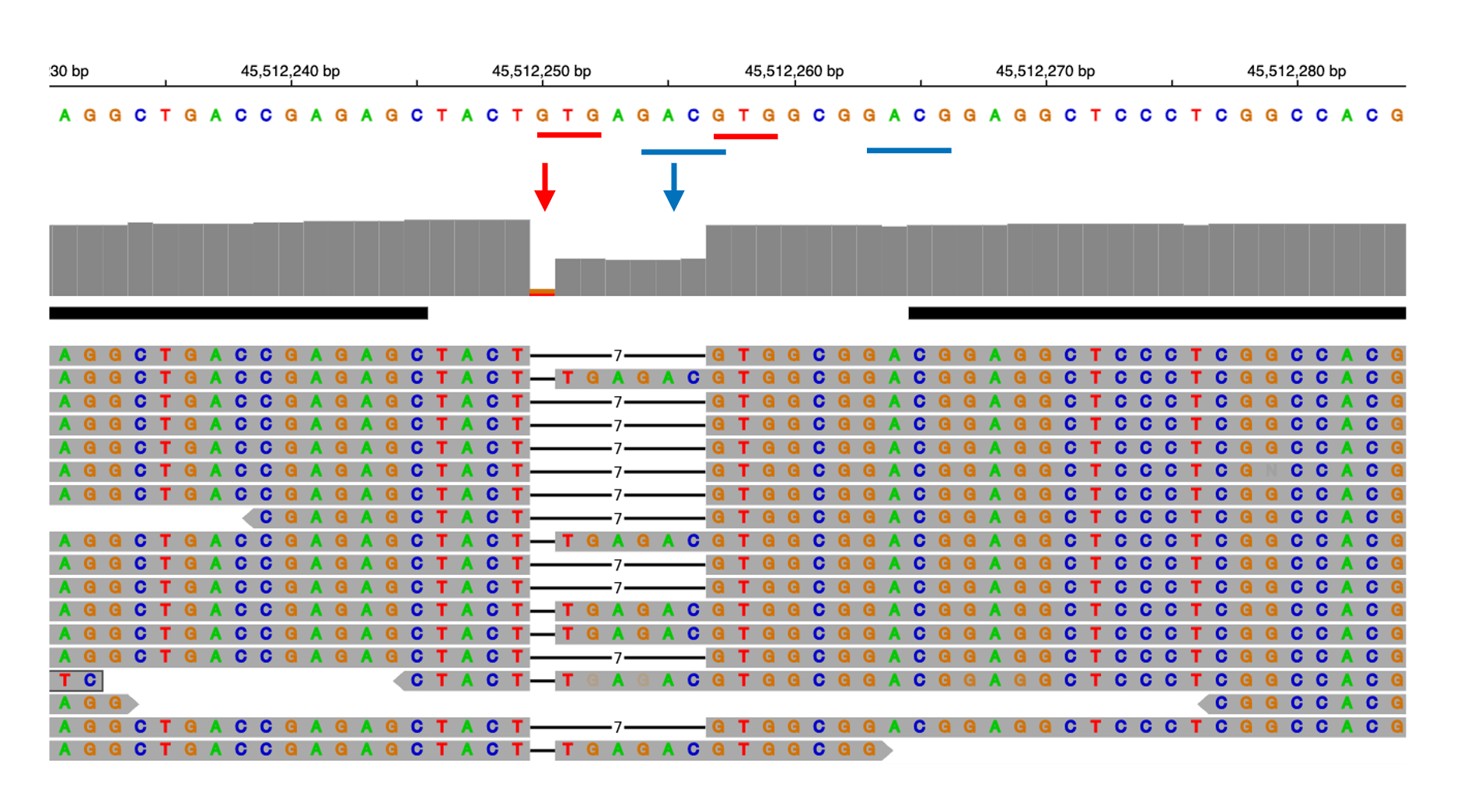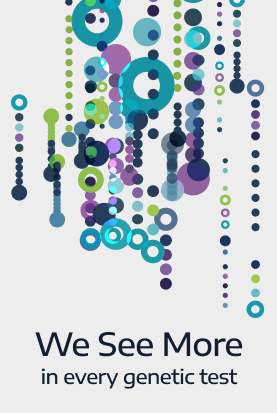
MISSED BY OTHERS, DETECTED BY US
Genomic Unity® Case Study
Clinical presentation
An 11-year-old male with normal developmental and communication abilities presented with retinal disorder symptoms including:
- Detached retina
- Bilateral high myopia
- Bilateral macular atrophy
- Fatty occipital cyst
- Secondary cataract
- Corneal scarring
Previous genetic testing
Prior testing was performed with negative results including:
- Inherited retinal disorders panel

Genomic Unity® Testing
was ordered because of its ability to identify all major variant types in a single test.
Results and interpretation
Variantyx Genomic Unity® testing identified two overlapping small sequence changes in COL18A1 : a likely pathogenic, maternally inherited 7 bp deletion and a pathogenic, de novo 1 bp deletion.
Both are frameshift variants resulting in early termination of the protein.
Diagnosis: Knobloch syndrome type 1

Uniform data from WGS clearly shows both indels. The flanking GTG and GACG underlined sequences have the potential to shift and be misaligned, partially covering or masking both the 1 bp and 7 bp indels.
The Variantyx Difference
Why were these overlapping indels identified by Genomic Unity® testing, and missed by a retinal disorders panel?
-
While small sequence changes are usually detectable by panel testing, there are features of these variants that likely complicated detection:
– The 1 bp de novo deletion overlaps with the beginning of the 7 bp maternally inherited deletion.
– The nearby GTG and GACG sequences (see red and blue underlined sequences in image above) may have partially or completely masked the variants.
– Even if some variants remained unmasked, there may have been too few remaining to detect.
Variantyx genome analysis detects all major variant types in a single test including small sequence changes, structural variants, repeat expansions and mitochondrial variants. Robust alignment algorithms and trio testing facilitate variant detection and comparison.
Variantyx tests that would have identified these variants
Want similar results for your patients?
Connect with a Clinical Specialist to find out how easy it is to bring the power of whole genome sequencing into your practice.


